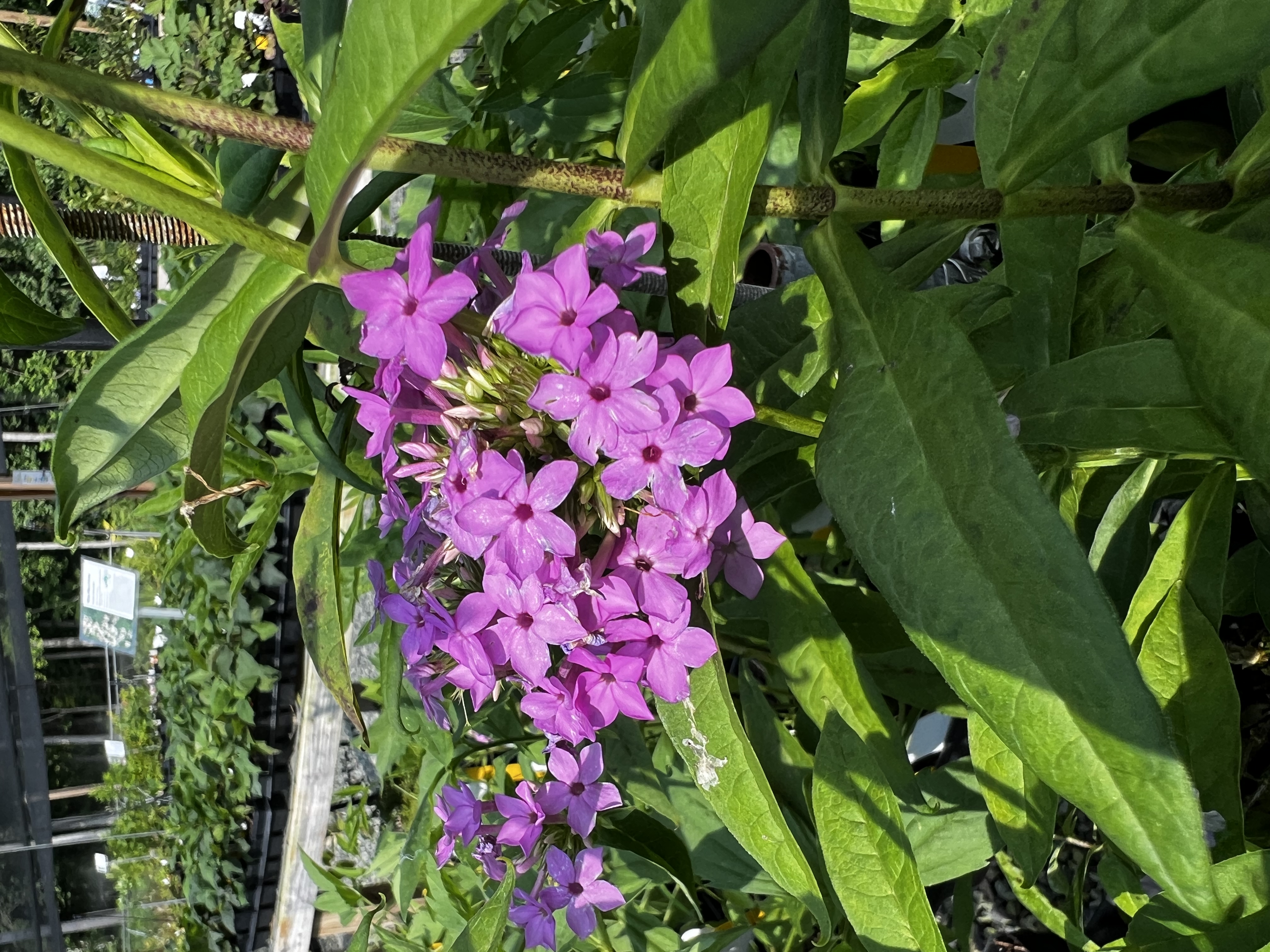 Garden Phlox is a staple of the late summer and early fall garden and ‘Jeana’ is a super-rewarding cultivar of it to grow. It provides wonderful color with its bright pink, aromatic flower clusters, attractive to people, butterflies and hummingbirds alike. Named after a woman in Nashville who identified this genotype, ‘Jeana’ is most famous for its extra long bloom time (July-October) and for excellent resistance to powdery mildew. However, we feel that its real claim to fame should be that is is covered with butterflies at all times throughout its bloom period. ‘Jeana’ thrives in full sun to part shade, shade in the afternoon being best. Even though resistant to powdery mildew, ‘Jeana’ should be spaced for maximum air circulation, and prevented from drying out with deep mulch. The USDA distribution map linked below is for the species, Phlox paniculata.
Garden Phlox is a staple of the late summer and early fall garden and ‘Jeana’ is a super-rewarding cultivar of it to grow. It provides wonderful color with its bright pink, aromatic flower clusters, attractive to people, butterflies and hummingbirds alike. Named after a woman in Nashville who identified this genotype, ‘Jeana’ is most famous for its extra long bloom time (July-October) and for excellent resistance to powdery mildew. However, we feel that its real claim to fame should be that is is covered with butterflies at all times throughout its bloom period. ‘Jeana’ thrives in full sun to part shade, shade in the afternoon being best. Even though resistant to powdery mildew, ‘Jeana’ should be spaced for maximum air circulation, and prevented from drying out with deep mulch. The USDA distribution map linked below is for the species, Phlox paniculata.
NURSERY HOURS
Wednesday: 10-4 Thursday: 10-6 Friday-Saturday: 10-4 Sunday: 12-4
Phlox ‘Jeana’

Key Info
Scientific Name: Phlox paniculata L. 'Jeana'
Common Names: Garden Phlox cv 'Jeana'
Family Names: Polemoniaceae (Jacob's Ladder Family)
Plant Type: Herbaceous perennial
Leaf Retention: Deciduous
Flower Color: Pink/rose
Special Characteristics: Nectar plant, Flowers fragrant, Atttracts hummingbirds, Good cut flowers, Tolerates Black Walnut, Attracts butterflies, Attracts birds, Long blooming period
Additional Info
Habit: Upright, clump-forming perennial multi-stemmed, basal rosette
Height: 2' - 4'
Spread: 2' - 3'
Soil Conditions: Prefers rich, moist, organic soils, acid and alkaline, sandy, loamy.
Leaves: Leaves are opposite, lance shaped, elliptical, conspicuously veined, deep green leaves 4-6 inches long.
Flowers (or reproductive structures: Individual flowers of 'Jeana', although small, share the structure of other Phlox flowers, consisting of of an array of 5 pink flattened petal-like lobes (total of ½ inch diameter) which are fused at the base into a narrow, darker pink, recessed tube containing five stamens and a single pistil. These flowers occur in fragrant, conical, bright pink terminal clusters up to 6" long, continuous magnets for butterflies and hummers over a long July to September bloom period.
Fruit: The seedling sprouts from 'Jeana' will not be true to type. This cultivar is propagated from cuttings.
Natural Distribution: The species grows in rich woods, and along stream banks and roadsides in the eastern mountains and piedmont and midwestern U.S., uncommon in natural habitats.
USDA Hardiness Zone: 4 to 8
USDA Wetland Indicator Status in NC: FACU
Pollination: Flowers are cross-pollinated by hummers and by nectar-seeking, long-tongued butterflies, bees, skippers, and moths.
Wildlife Connections: Attracts hummingbirds, butterflies and other pollinators. Caterpillars of various moths feed on flowers, buds and foliage; bugs and beetles suck the juices (Illinoiswildlfowers.info). Mammalian herbivores readily consume Speckled Phlox, including rabbits, groundhogs, and deer.
Propagation: Increase by stem or root cuttings, or by division.
